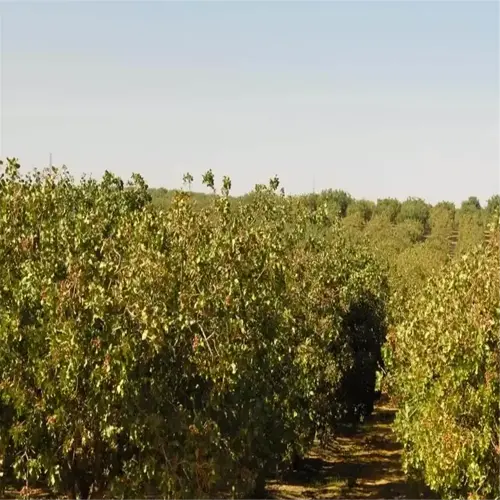When is the right time to harvest?

Written by
Julia Anderson
Reviewed by
Prof. Charles Hartman, Ph.D.Collecting pomegranates at the right time will guarantee that you receive the most sweetness and shelf life from your pomegranates. Select fruits that feel heavy for their size and have a deep red color. To check for ripeness, I tap the fruit and if I hear a metallic ‘tink,' that pomegranate is rich in sugar and should be harvested. Never pull the pomegranate; you should use sharp bypass pruners and cut the stem without pulling the fruit.
Visual Signs
- Color shift: From pink to deep crimson
- Skin texture: Glossy to matte finish transition
- Crown formation: Slight splitting at calyx end
Tactile Tests
- Weight check: Compare to similar-sized fruits
- Rind hardness: Gentle thumb pressure resistance
- Sound test: Hollow vs. metallic tap tones
Post-harvest handling mitigates rind injury. I wear cotton gloves to prevent scratching the waxé surface of the fruit. Fruits can be put in padded baskets; plastic bins can bruise fruit. A client lost 30% of their crop last year due to improper handling during collecting in the field.
Unwashed pomegranates should be stored at: 40-45°F (4-7°C) with a relative humidity of around 65%. In my cellar configuration, I use wooden crates lined with parchment paper. Check every week for soft spots. Well-stored fruits last approximately 3-5 months. For freezing, spread arils out in single layers on baking sheets before bagging some for later consumption.
Steer clear of these mistakes: harvesting after rain (mold risk), leaving stem stubs (wet rot), and refrigerating wet fruit. I cured 50 oversweetened pomegranates last year by juicing them right after I noticed the splits.
Refractometers are utilized for measuring brix levels by the commercial grower. The home gardener can taste-test one fruit per tree. Accurate sugar measurements should be taken 3 days after heavy watering. My ‘Wonderful' variety has an 18% brix reading when the fruit is harvested at 85 days post-flower drop.
Read the full article: How to Grow Pomegranate: Expert Tips for Success

